- Home
- Thomas Keneally
Australians, Volume 2 Page 6
Australians, Volume 2 Read online
Page 6
There’s never a stone at the sleeper’s head,
There’s never a fence beside,
And the wandering stock on the grave may tread
Unnoticed and undenied;
But the smallest child on the Watershed
Can tell you how Gilbert died.
*
There were bushrangers who, by their savagery, attracted no songs, no curious maidens.
John and Thomas Clarke were, like Ned and Ben, the children of an emancipist father in the Braidwood district. Clarke senior’s lease was a small holding in hilly, scrubby country—probably about 40 or 50 acres. He was a seller of sly grog and a cattle thief. He had never forgiven a nearby pastoralist who had not renewed an earlier and better lease he held, and for twenty years until his death in prison in 1866 (on a charge of murdering an Aborigine) he would school his sons in stealing livestock from the man responsible. It was perhaps a good year for him to die, in that it was also the year of the Registration of Brands Act which made cattle duffing a much harder trade.
In 1864 his relatives had organised Thomas Clarke’s escape from Braidwood gaol where he was awaiting trial for stock theft. He took to the bush imbued with the characteristic hatred of the establishment and the police. With various members of his clan, he held up mail coaches and post offices and shot dead a constable, Miles O’Grady. His brother joined him in 1866. Henry Parkes appointed special police to hunt down the Clarkes but they were called off for being ineffectual. He then created what would now be called a task force of four special police led by a gaol warden named John Carroll. In 1866 that party, walking along a bush track, was surrounded by the Clarkes and were all shot dead with far greater ruthlessness than Ned Kelly would show in his later tragic showdown with the Victorian police at Stringybark Creek in 1878. Parkes now poured police into the area, and the horrifying repute of the Clarkes was not improved by the fact that the opportunistic Frank Gardiner used the name ‘Clarke’ and introduced himself as such to some of his victims. The founder of Presbyterianism in Australia, that turbulent and wonderful citizen John Dunmore Lang, would show how even for killers of police like the Clarkes there was a public sympathy, and some romance still attached to them. Held up by the Clarkes while travelling in a coach near Goulburn, Lang created a public controversy by saying he was not molested by the young men and could understand the attraction of such a life to them.
An inquiry into the crisis represented by bushranging was held and it was discovered that magistrates were not brave enough to send them to trial, many squatters collaborated with them to save their properties from raids, and the Irish of the ex-convict and small landholder class were their protectors. The authorities of course won in the end. Led by an expert bushman, Senior Constable William Wright, and a black tracker named Sir Watkin, the Clarkes were captured in April 1867, and despite the defence by the eloquent Irish lawyer and politician Bede Dalley, they were both hanged in Darlinghurst gaol in June.
The young man whom some named Mad Dog Morgan or ‘the travellers’ friend’, the latter name attaching to his treatment of ordinary travellers not large pastoralists, had operated on both sides of the Murray and had raided stations whose owners had a reputation for severity. At Burrumbuttock Station he made the owner write out cheques totalling £400 for the station employees. He was an energetic ambusher of coaches, where he behaved with the same sort of gallantry as his contemporary Ben Hall. But his volatility and mental instability, and two murders he was guilty of (in ‘fair fights’ he would have said), explained the nickname which would attach to him in bushranging history. In 1865 he crossed to Victoria to work above the King River, and a station owner named George Rutherford and five station hands were able to ambush him and shoot him dead.
It might be from the treatment of his body that the awe for the bushranging phenomenon can be judged. Hair was cut from his head and beard as souvenirs, and after his body was displayed in Wangaratta, his head was removed and sent to Melbourne University. There were rumours lasting to this day that his scrotum was fashioned into a tobacco pouch.
CULLIN-LA-RINGO
In October 1861 a victim of frontier warfare, the highly entrepreneurial Victorian landowner Horatio Wills, son of a convict transported for life for highway robbery, lay dead and badly hacked with eighteen other European corpses in the tall grass of a run named Cullin-La-Ringo, near the present town of Springsure, inland from Rockhampton. The Kairi people had killed Wills and his stockmen and their families. This party had travelled for three months by ship and then overland to reach these natural pastures. It was a notable case of a worthy from the south expanding his interests into the fresh pastures of Queensland, but it set a tone for relations, black and white, in north Queensland.
Horatio Wills had been born in Sydney in 1811 and was at the height of his powers by 1860. From the 1830s onwards, after a period in which he edited his stepfather George Howe’s renowned Sydney Gazette, he had shown a capacity to move cattle and sheep over great distances. In the 1840s he had taken up a run of just under 125 000 acres in western Victoria, a property he named Lexington. Horatio experimented with breeding and with wheat, and Lexington became a model station. After he sold it and took up residence near Geelong on a smaller property named Bellevue, he was able to travel, live graciously and educate his sons in England and Germany.
In the Western District of Victoria inland from Portland, where Horatio Wills had established Lexington, the squatters, including Wills himself, had been concerned by the Aborigines and their attacks on shepherds and settlers. Augustus Robinson, the famous Protector of Aborigines, had listed Horatio Wills as having shot a number of Aborigines. On the other hand, Horatio would have argued he got on well with the non-predatory Aborigines who lived close to his homestead, and fed them rations twice a day. Rations were a form of peacemaking, and for the natives a pleasant break from the arduous work of hunting and the gathering and grinding of seeds. This combination of Christian charity to nearby genial and non-combative natives contrasted with feelings towards abominable Aboriginal raiders who struck from a distance away.
The large pastoral stations once available by squatting and then by lease in Western Victoria were by 1860 hard to come by, but inland Queensland offered the same promise the Western District once had. In 1860 Horatio Wills had taken over the lease of four blocks, each of 16 000 acres, the whole going by the title Cullin-La-Ringo. The previous owner, Peter Macdonald, had become so short of rations on one of his sweeps of the country that he tried to survive by eating tadpoles and drinking the blood of emus. But Wills had the resources of capital to ensure he was never himself in that situation.
In January 1861 he left his wife behind at Bellevue and set off with his son Thomas and a group of his stockmen, wagon drivers, shepherds and servants, along with their wives and children, by ship to Brisbane, where they would buy livestock and drove it to the station. By taking his son Tom on this journey Horatio hoped he would be able to introduce him to a more serious world of frontier business, since the convivial twenty-five-year-old, whom his father had taken the trouble to educate at Rugby School in England, had until now pursued no career except as a sportsman, playing in intercolonial cricket matches where he had a reputation as an intimidating bowler. Twenty months before the Cullin-la-Ringo massacre, he had helped codify for his cricket club a most remarkable code of football.
In early February the party set off from Brisbane, with five bullock wagons, part of whose space was taken up by the wives and families of the men, and moved over the coastal range to the Darling Downs where Horatio assembled a herd of ten thousand sheep. From here it was a 600 mile journey on rationed food, but the native-born Australians and the peasant immigrants who now populated the continent were rugged people used to short commons. They reached Rockhampton in seven weeks, and then turned west.
At the time Horatio Wills’ party turned inland from Rockhampton, Lieute
nant Powell of the Native Mounted Police had recently been through the region of Cullin-La-Ringo with George Dalrymple, former Sri Lanka coffee planter and now Commissioner for Lands. The pair had made unrecorded punitive raids on the Aborigines. By the time the Wills party arrived, both sides were committed to ferocity and, on the Aboriginal side, to vengeance.
The people who settled central and northern Queensland, the Territory and Western Australia possessed an acquisitive and martial spirit. They were not timid folk. But the splendidly built natives of Queensland had convictions about the landscape and their right to it as much as any grazier. Being human, they were not above attacking pastoral or mining parties for the goods on their wagons as well as from outrage at their unthinking trespass. As distinct from the defence of their livestock and homesteads, the frontier settlers already saw punitive excursions as a necessity, and any native raids on Europeans as nothing more than treachery. They also were appalled at the softer attitudes of people in more settled regions along the coast and in Brisbane, who argued that Aboriginal attacks arose from earlier deadly Native Mounted Police and posse-based raids on their own people.
It was into this hostile atmosphere that confident Horatio Wills rode, ignoring his son’s advice about being watchful, his suggestion that they broach the cases of arms and distribute weapons amongst the men of the party. Now, from Wills’ campsite on Cullin-La-Ringo, in between flat-topped hills, as the men set to cutting slabs of wood for a new series of huts, Horatio had the heady experience of seeing his grassland stretching away without apparent limit. Horatio—or, more correctly, whatever overseer he intended to leave here when all was set up—would live the same sort of harsh life that the squatters had lived in the 1830s in New South Wales and Victoria. Perhaps he hoped that Tom Wills, the arrant sportsman and intercolonial cricketer, might take on that job.
The Aborigines could be heard in the bush shouting to each other but Horatio was not concerned. Seven days after arriving at Cullin-La-Ringo, he ordered Tom to take two empty drays and two men to Albinia Downs Station 50 miles (80 kilometres) south for a load of supplies. The journey to and from Albinia Downs took a full week. As Tom and his drays returned and neared the proposed homestead site at Cullin-La-Ringo, the stench of corpses drifted out to meet them. Riding nearer he found scattered the victims of retaliatory slaughter—nineteen dead, including his father. It was clear the dead had been taken by surprise. Women still had sewing in their hands. They had not been violated. The cook was by his fire, the children by their mothers. Three of the men had been erecting a tent at the time of the attack. The warm spring weather now made burial imperative—Horatio in his own grave and the others in a mass grave.
This would prove to be the largest massacre of settlers on the frontier. It would be used to justify untold slaughter of natives. Occurring early in the settlement of the region, its impact on future contact between the races was enormous even if it cannot be exactly measured. There was a belief that the attack was motivated purely by greed rather than as a form of resistance to invasion, and it is true, since Aborigines are not different from other humans, that desire for plunder was a factor. Blankets, crockery, tools of all kinds, knives and clothing had been taken, and some thought all this property had been too clearly displayed and had tempted the Aborigines.
There was a tendency to blame Horatio for his lack of prudence. But even so, to edgy men on a perilous frontier the massacre was an act of war. Punitive expeditions, one of them assembled by the station owner Jesse Gregson, set off almost at once. Daniel Cameron on Planet Downs Station wrote disapprovingly, ‘Bloodshed, terror and anarchy, retaliation and revenge will be quick and sharp . . . the innocent and guilty alike will disappear.’ Another contemporary source, F.H. Grundy, declared ‘the greatest punitive expedition in pioneering history gathered in force from points north, east, south and west. Hundreds of blacks were slaughtered.’ It is not mentioned whether Tom Wills rode with any of these parties. His brother wrote from Germany to ask him: ‘Were you one of the eight who attacked the blacks’ camp the Tuesday after it happened?’
Peter Macdonald, former occupier of Cullin-La-Ringo, convened a meeting to form a second posse to hunt down the attackers and add to Gregson’s first reprisal raid. Tom’s godly sister, Emily, would write from Victoria to her young brothers in Germany that 300 blacks, ‘gins and all’, had been slaughtered. Tom certainly expressed anger with anyone who recorded that they had come across a group of Aborigines and not exacted revenge. Charles Dutton of Bauhinia Downs felt sorry for the Aborigines’ destiny as fair game, but was attacked by Tom in a letter to the colonial secretary. Tom felt the most savage war had been waged against him and his family. But his attitude was reflected too in others who were miles from the disaster.
Meanwhile, Tom’s first and most pressing need was to find a knowledgeable man to help him at Cullin-La-Ringo. He would honour his father by giving up cricket and running the place. He had a hard time recruiting stockmen to this accursed and vulnerable place. By November, some Queensland papers, as if the massacre had provided a sporting windfall, suggested that since Tom was now in Queensland he might be recruited for the state team.
There was another aspect to the Aborigines of the frontier though. They made fine stockmen and readily took to the horse as an extra dimension to the skills they already possessed of reading country, identifying tracks and silent pursuit. Oscar de Satgé was another Rugby Old Boy drawn to the pastoral life. With his brother, he drove livestock from Melbourne to Queensland’s Darling Downs, crossing rivers and open pasture. Even in drought it was a delight to Satgé to scout for water in billabongs along the Lachlan looking for somewhere for the cattle and/or sheep to take their once-in-thirty-six-hour drink. In this he used Aboriginal stockmen. And later, on his property on the Darling Downs, he would say, ‘I sometimes thought the black boys could see through a ridge,’ when it came to sighting wild horses and tracking them to where they could be surrounded and mustered into the homestead yards.
Satgé, having taken up a property at Peak Downs in the Central Highlands, heard the news of the Cullin-La-Ringo slaughter after one of his own black drovers met a group of fleeing Aborigines with blankets, moleskin trousers and blue shirts. He came to consider the revenge expeditions of Patten, Gregson, McIntosh and others regrettable in scope, and the arrival of a detachment of the Native Police under Lieutenant Love led to a further tracking down and thorough punishment of the Aborigines within a 100-mile radius of the massacre. Horatio Wills had always argued that after long experience in Victoria, he was prepared to civilise and make use of the Aborigines, and had made friends with them from the start. ‘Poor Wills,’ wrote Satgé, ‘paid the penalty of his kindness and over-confidence.’ Satgé said that he interpreted the lesson of Cullin-La-Ringo to be never to have blacks ‘in’—that is, within reach of the homestead.
The realities of bush life ultimately defeated Tom Wills. Given his failures of competence, the trustees of the company his father had founded to oversee the affairs of Cullin-La-Ringo removed him from its management in 1864. Travels from Queensland to Melbourne to take part in interstate games or intercolonial games of cricket had in any case distanced him from the management of the place.
THE ABOMINABLE CRIME
One of the motives for putting an end to transportation had been the knowledge that a penal life involved the likelihood of sodomy. When the young Benedictine priest William Ullathorne heard the confessions of Irish convicts condemned to death after an uprising on Norfolk Island, he is said to have been so shocked that, balancing a fear of revealing the secrets of the confessional with his outrage, he published an 1838 pamphlet, The Horrors of Transportation Briefly Unfolded to the People, in which he decried the unnatural acts the convict system drove men to.
In nineteenth-century Australia, as in the rest of the English-speaking world, sodomy—‘the abominable act of buggery’—was a capital offence. In the imaginations of many
members of the heterosexual majority, it was also associated with men dressing as women for depraved purposes. In the theatres of the colonies and for the purposes of vaudeville men frequently dressed as women. That was then, as it had been for many centuries, one of the staples of popular entertainment. But it was not acceptable or legal unless done in fun.
In 1863 a police constable in Fitzroy apprehended what appeared to be a woman talking to a man on a corner. The woman took off when the policeman approached but was run down after a block and a half. At the police station the apparent woman confessed to being a man, John Wilson. His offence of dressing as a woman for apparently sinister purposes attracted a charge of vagrancy, but Wilson gave the policeman a key to a house which he shared with a man named Moody who would be locked out if the key was not passed to him. The police took the key to the premises and inspected them. Inside they found there was only one bedroom, and a search turned up some pornographic photographs of men. Within hours Wilson was charged with sodomy, and thus faced the possibility of the gallows, the first non-convict to be in that situation for that crime.
It took some months for the authorities to gather depositions from a number of men who had had sex with Wilson as paying clients—these men were granted immunity so that they could testify that they had paid Wilson for fellatio, but under the sincere belief that he was a woman. The trial took place before Sir William Stawell, Chief Justice of the Supreme Court, and on his being found guilty, Wilson was condemned to death. After some weeks the sentence was commuted to life. Wilson was very unfortunate in the timing of his supposed crime. In 1861, under the Crimes Against the Person Act in the United Kingdom, the death penalty for sodomy was abolished and substituted by ten years’ imprisonment. But it was not until 1864, the year after Wilson faced his judge, that Victoria passed the Criminal Law and Practice Act. This Act still prescribed the death penalty for persons convicted of the abominable crime either with a person under the age of fourteen, or ‘with violence and without consent’. But otherwise the maximum sentence was fifteen years, no bagatelle from a Victorian life span, especially since it might involve flogging as well, but better than the whole of life. A tragic figure, Wilson wasted and died after serving six years in Pentridge Prison.

 Confederates
Confederates Flying Hero Class
Flying Hero Class Gossip From the Forest
Gossip From the Forest Schindler's List
Schindler's List Bring Larks and Heroes
Bring Larks and Heroes Australians: Flappers to Vietnam
Australians: Flappers to Vietnam The People's Train
The People's Train Crimes of the Father
Crimes of the Father A Family Madness
A Family Madness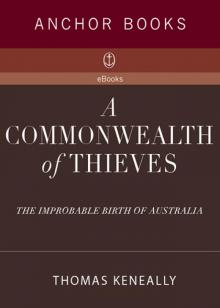 A Commonwealth of Thieves
A Commonwealth of Thieves Ned Kelly and the City of Bees
Ned Kelly and the City of Bees A River Town
A River Town Bettany's Book
Bettany's Book Blood Red, Sister Rose: A Novel of the Maid of Orleans
Blood Red, Sister Rose: A Novel of the Maid of Orleans Victim of the Aurora
Victim of the Aurora American Scoundrel American Scoundrel American Scoundrel
American Scoundrel American Scoundrel American Scoundrel Three Cheers for the Paraclete
Three Cheers for the Paraclete Australians: Origins to Eureka: 1
Australians: Origins to Eureka: 1 The Power Game
The Power Game The Chant Of Jimmie Blacksmith
The Chant Of Jimmie Blacksmith The Daughters of Mars
The Daughters of Mars Searching for Schindler
Searching for Schindler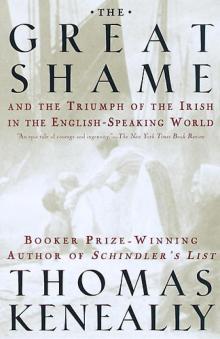 The Great Shame: And the Triumph of the Irish in the English-Speaking World
The Great Shame: And the Triumph of the Irish in the English-Speaking World Abraham Lincoln
Abraham Lincoln The Widow and Her Hero
The Widow and Her Hero Eureka to the Diggers
Eureka to the Diggers Shame and the Captives
Shame and the Captives The Survivor
The Survivor Jacko: The Great Intruder
Jacko: The Great Intruder The Book of Science and Antiquities
The Book of Science and Antiquities Homebush Boy
Homebush Boy The Playmaker
The Playmaker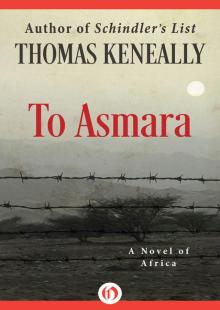 To Asmara: A Novel of Africa
To Asmara: A Novel of Africa A Woman of the Inner Sea
A Woman of the Inner Sea The Tyrant's Novel
The Tyrant's Novel Australians
Australians Schindler's Ark
Schindler's Ark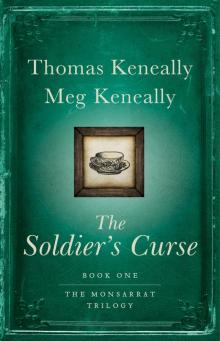 The Soldier's Curse
The Soldier's Curse Australians, Volume 3
Australians, Volume 3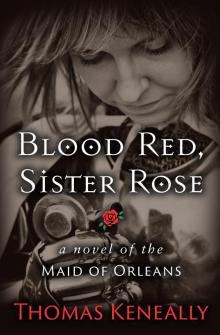 Blood Red, Sister Rose
Blood Red, Sister Rose A Victim of the Aurora
A Victim of the Aurora The Unmourned
The Unmourned Australians, Volume 2
Australians, Volume 2 To Asmara
To Asmara